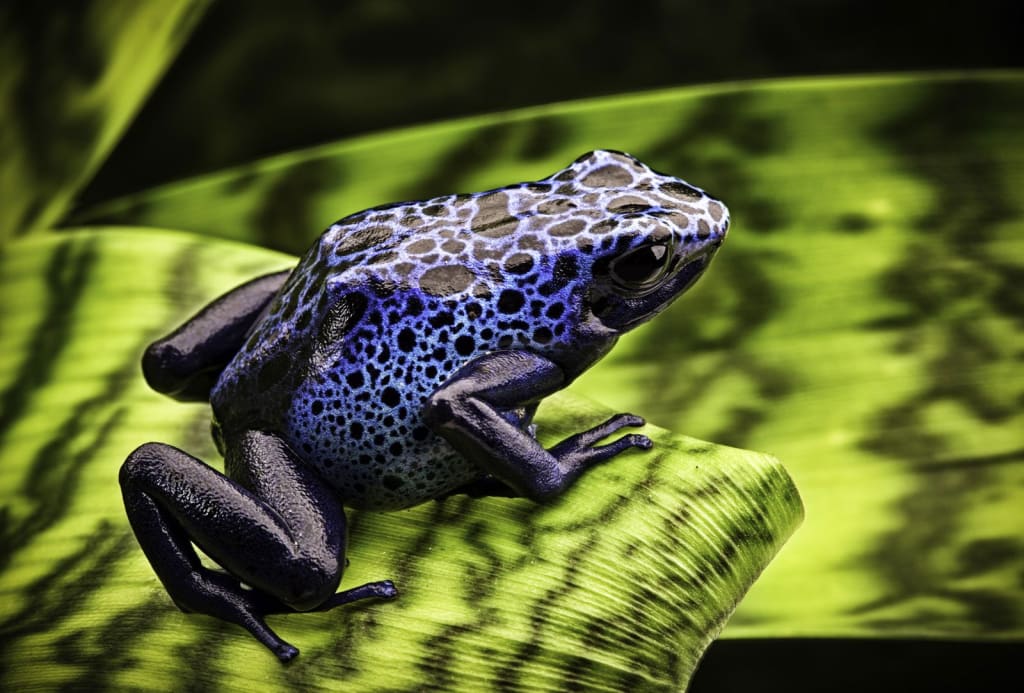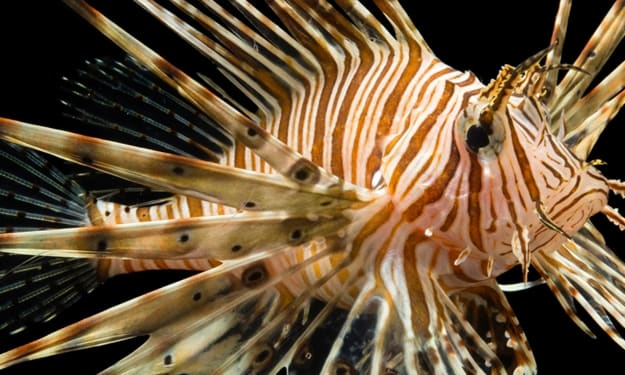
Frog characteristics
Frogs are a diverse group of amphibians that are found all over the world, except in extremely cold or dry environments. They are known for their unique ability to jump, which is due to their powerful hind legs. Frogs are also characterized by their smooth, moist skin, long hind legs, webbed feet, and bulging eyes.
There are over 7,000 species of frogs, ranging in size from the tiny Brazilian gold frog, which is only 9.8 mm long, to the goliath frog, which can grow up to 32 cm in length and weigh as much as 3.3 kg. Most frogs are carnivorous and feed on insects, spiders, and other small invertebrates, although some larger species may also eat small vertebrates like fish, snakes, and rodents.
Frogs are important members of many ecosystems, playing roles as both predators and prey. They are also important indicators of environmental health, as they are sensitive to changes in their habitat and can be affected by pollutants and other environmental stressors.
Frogs are also culturally significant in many parts of the world, with many myths, stories, and religious beliefs associated with them. They have also been studied extensively by scientists, particularly in the fields of developmental biology and genetics, due to their unique life cycle and ability to regenerate damaged tissues.
Frog Types.
There are thousands of species of frogs, but here are some of the most common types:
Tree Frogs - These are small, colorful frogs that live in trees and are known for their distinctive calls.
Bullfrogs - These are large, green or brown frogs that are commonly found near bodies of water, such as ponds or lakes.
Poison Dart Frogs - These are brightly colored, small-sized frogs that are known for their toxic skin secretions.
Horned Frogs - These are large, round-bodied frogs that have horn-like projections above their eyes.
Leopard Frogs - These are medium-sized, spotted frogs that are found near ponds and other bodies of water.
American Green Tree Frog - These are small, bright green frogs that are native to the southeastern United States.
African Clawed Frogs - These are aquatic frogs that are native to Africa and are often kept as pets.
Pacman Frogs - These are large, round-bodied frogs that are named for their resemblance to the video game character, Pac-Man.
Gray Tree Frog - These are small, gray-colored tree frogs that are found throughout North America.
Goliath Frogs - These are the largest frogs in the world and can be found in Cameroon and Equatorial Guinea in Africa.
Glass Frogs Unique
There are many unique and interesting species of frogs, each with their own special adaptations and characteristics. However, one of the most special types of frogs is likely the glass frog.
Glass frogs are named for their translucent skin, which allows you to see their internal organs and skeletal structure. They are found in Central and South America, and there are over 150 species known to science.
In addition to their transparent skin, glass frogs are known for their large eyes, sticky toes, and unusual breeding behaviors. Many species lay their eggs on the undersides of leaves overhanging streams or other bodies of water, and the tadpoles hatch and drop into the water below when they are ready to develop.
Overall, glass frogs are fascinating and unique creatures that are beloved by many frog enthusiasts and researchers alike.
Expensive Golden Poison Frog
The most expensive frog in the world is the Golden Poison Frog (Phyllobates terribilis), which is found in the rainforests of Colombia. It is called the "golden" poison frog because of its bright yellow or orange coloration, which is a warning to potential predators that it is highly toxic.
The Golden Poison Frog is considered one of the most toxic animals in the world, and it is estimated that a single specimen could contain enough poison to kill up to 20,000 mice or 10 humans. Due to its high toxicity, it is not a popular pet, and it is illegal to export it from Colombia.
In the pet trade, the Golden Poison Frog can sell for several thousand dollars per specimen, making it one of the most expensive frogs in the world. However, due to its protected status and the risk of handling such a dangerous animal, it is not a recommended pet for the average person.
Frog medicine usage
Frog medicine refers to the traditional use of the secretions of certain species of frogs for medicinal and ceremonial purposes in various indigenous cultures in South America. The secretions of the Kambo frog, for example, have been used in traditional medicine to treat a variety of conditions such as infections, pain, inflammation, and depression.
Kambo is typically administered by applying small dots of the frog's secretion to burn marks on the skin. The secretion contains various bioactive compounds, such as peptides and alkaloids, that are believed to have therapeutic effects.
In addition to its medicinal uses, Kambo has also been used in various traditional ceremonies for spiritual and cleansing purposes. The frog is seen as a symbol of transformation and rebirth in some indigenous cultures, and Kambo is believed to help individuals cleanse their bodies and minds, release negative energy, and connect with their inner selves.
It's worth noting that the use of frog medicine, like any traditional or alternative medicine, should be approached with caution and under the guidance of a trained practitioner. The safety and efficacy of frog medicine have not been extensively studied, and some people may experience adverse reactions or interactions with other medications.
Frog Body Functions.
Frogs are cold-blooded amphibians that have a number of unique adaptations that help their bodies function in their aquatic and semi-aquatic environments. Here are some key aspects of a frog's body functions:
Respiration: Frogs have lungs, but they also have thin, moist skin that allows them to absorb oxygen and release carbon dioxide. They can also breathe through their mouth and nostrils when they are on land, and some species can even breathe underwater through their skin.
Circulation: Frogs have a three-chambered heart, which is less efficient than the four-chambered heart found in mammals and birds. However, this adaptation allows frogs to move oxygenated and deoxygenated blood to different parts of their bodies, which is helpful when they are transitioning from water to land.
Digestion: Frogs are carnivores that feed on insects, worms, and other small animals. Their digestive system includes a stomach, small intestine, and large intestine, and they can excrete waste through their skin as well as their cloaca (an opening that serves as the exit point for the digestive, urinary, and reproductive systems).
Skeletal and muscular systems: Frogs have strong back legs that allow them to jump and swim. Their skeletons are adapted to these movements, with elongated pelvic bones and fused ankle bones. Their muscles are also adapted for jumping, with fast-twitch fibers that provide quick bursts of energy.
Nervous system: Frogs have a complex nervous system that includes a brain, spinal cord, and peripheral nerves. They have excellent eyesight and can see colors and movement well, which helps them find prey and avoid predators.
Overall, a frog's body functions are adapted for life in water and on land, allowing them to thrive in a variety of environments.
Frogs: pets or not?
Frogs can be kept as pets, but whether or not they make good pets depends on the individual's preferences and their ability to properly care for the frog. Frogs have specific environmental and dietary needs that must be met in order to keep them healthy, and they require a fair amount of attention and maintenance.
Some species of frogs that are commonly kept as pets include White's tree frog, African clawed frog, and Pacman frog. Before getting a frog as a pet, it is important to do thorough research on the specific species and their care requirements to ensure that you can provide a suitable habitat and diet for the frog.
Goliath Frog Details.
The largest frog in the world is the Goliath frog (Conraua goliath), which is found in the rainforests of Cameroon and Equatorial Guinea in West Africa. Adult Goliath frogs can weigh over 7 pounds (3.2 kg) and can grow up to 13 inches (33 cm) in length. They have a distinctive appearance, with a broad head, muscular body, and mottled green and brown skin.
Goliath frogs are primarily aquatic and spend most of their time in fast-flowing streams and rivers, where they feed on insects, crustaceans, and other small animals. Despite their impressive size, Goliath frogs are not aggressive and are generally shy around humans.
Because of their large size and striking appearance, Goliath frogs are sometimes kept as pets, although this practice is generally discouraged due to their protected status and the difficulties involved in caring for such a large and demanding animal.
High Frog Populations Vary.
I don't have access to current population data for frogs in different countries. However, I can tell you that frogs are found all over the world, and different species of frogs have adapted to different climates and environments.
Some countries with high biodiversity of frogs include Brazil, Colombia, and Costa Rica, which are home to a large number of different frog species. The rainforests in these countries provide ideal habitats for frogs, as they are rich in moisture and have abundant food sources.
Australia is another country known for its high frog diversity, with over 240 species found there. However, many of these species are threatened or endangered due to habitat destruction, disease, and other factors.
It's important to note that frog populations can be highly variable depending on factors such as climate, habitat availability, and human activities. So while some countries may have historically had high frog populations, this may not necessarily be true at present.
Protecting Frogs.
Frogs play a crucial role in maintaining the balance of the ecosystem as they serve as both predator and prey. Unfortunately, many species of frogs are threatened or endangered due to habitat loss, pollution, climate change, disease, and over-harvesting. Here are some ways to protect frogs:
Preserve their habitat: One of the most effective ways to protect frogs is to preserve their habitat. This can be done by conserving wetlands, forests, and other natural habitats that frogs depend on.
Reduce pollution: Pollution can harm frog populations by contaminating their habitats and food sources. To reduce pollution, we can use eco-friendly products, properly dispose of hazardous materials, and support regulations that protect the environment.
Control the use of pesticides: Pesticides can have harmful effects on frogs and other amphibians. To minimize the use of pesticides, we can adopt organic farming practices and avoid using chemicals in our gardens.
Avoid introducing non-native species: Non-native species can disrupt the balance of ecosystems and threaten native species. To protect frogs, we should avoid introducing non-native species into their habitats.
Educate others: Raising awareness about the importance of frogs and their conservation can help to protect them. We can educate others by sharing information, participating in conservation programs, and supporting organizations that work to protect frogs and their habitats.
By taking these steps, we can help to protect frogs and ensure that they continue to play their important role in the ecosystem.





Comments
There are no comments for this story
Be the first to respond and start the conversation.